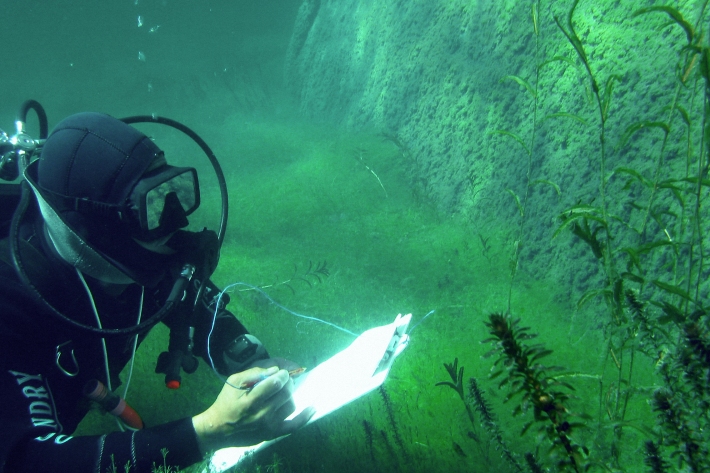-

Putting algae to work
Feature story15 December 2022Can native freshwater algae help restore the mauri of local waterways? Lawrence Gullery investigates. -

Scientists listen to the sound of photosynthesising seaweeds
Media release22 October 2018NIWA scientists are hoping they may one day be able to “listen” to kelp forests in the waters around New Zealand to find out how they are faring. -

From small beginnings a valuable collection grows
Media release24 July 2018Cathy Kilroy is quick to admit she’s a person who doesn’t like throwing anything away. -

Algal monitoring service
ServiceBlooms of hazardous cyanobacteria (blue-green algae) in rivers, lakes and reservoirs can cause problems for both animal and human health. -

Coralline Algae
This identification guide covers the common crustose coralline algae found in central New Zealand. -

Algae ID guides
A collection of ID guides to algae. Groups include major freshwater algal groups, diatoms and blue-green (cyanobacteria), red and green algae. -
Q&A - Bloomin' algae!
Feature story06 June 2017A hot and steamy summer saw Kiwis heading down to rivers and lakes to cool off. But they weren’t the only ones enjoying the warmer weather – algae had a great time too. -

Geomorphology influences periphyton abundance
Research ProjectThis research project investigated whether the mechanisms for periphyton removal in rivers relate more directly to hydraulic and geomorphic conditions than flow metrics. -

Beautiful Browns
News article16 September 2016Do you know where in New Zealand to find Neptune’s necklace or rimurapa? Or how to tell apart Carpophyllum from Cystophora? -

Reclassifying karengo (nori)
Research ProjectThe seaweed known colloquially as nori in Japanese - used for making sushi - or karengo in Maori has been reclassified by an international team of scientists including NIWA's Dr Wendy Nelson. -

Specialist analytical services
ServiceFind out more about our specialist analytical services. -

Bio-oil from wastewater algae
Research ProjectThis project will demonstrate the commercial feasibility of producing bio-oil by the conversion of algae biomass that has been grown in wastewater treatment facilities. In particular we aim to maximise algae production in High Rate Algal Ponds (HRAP) by adding carbon dioxide, and demonstrate energy efficient conversion of algal biomass to bio-oil.
